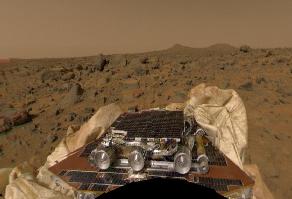This image shows the Mars Pathfinder lander and Rover.
Click on image for full size
NASA/JPL
An Overview of the Mars Pathfinder Mission
People were really excited when Pathfinder landed on Mars on July 4, 1997. The Mars Pathfinder mission (MPF for short!) was sent to Mars to look at the
rocks and
soil of Mars.
The MPF was actually 2 parts, a lander and a rover. The lander stayed right where it landed while the rover named "Sojourner" could roam the surface. The rover got to look at lots of rocks. Scientists at NASA gave the rocks cool names like Scooby Doo, Shark, Pooh Bear and Chimp. What would you name a rock on Mars?
NASA's Mars Pathfinder mission ended on September 27, 1997. It was a huge success!
You might also be interested in:

The Mars Pathfinder was launched on a rocket last December. The spacecraft landed on Mars on July 4th, 1997. If you had the chance to visit Mars, you might take pictures of your trip. This is exactly what
...more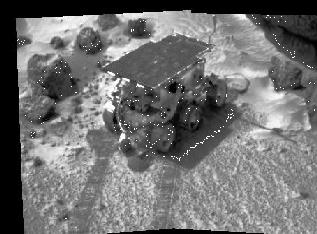
Spinning the Rover's rear wheels was one way for scientists to test the soil of Mars. As the wheels dug into the surface, the Rover discovered that much of the ground is made of dust, possibly deposited
...more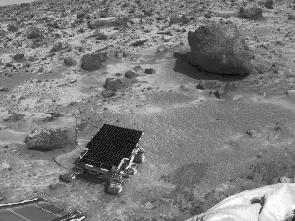
When Mars Observer blew up, the Mars Surveyor Program was born. The Surveyor Program was suppose to consist of 8 spacecraft. The spacecraft were named: Mars Pathfinder, Mars Global Surveyor, Mars '98,
...more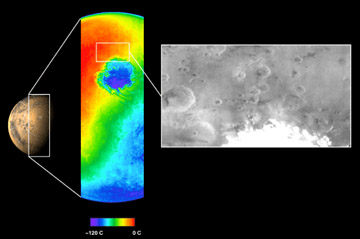
The Mars Odyssey was launched April 7, 2001. After a six-month journey, the Odyssey arrived at Mars on October 24, 2001. The instruments onboard the Mars Odyssey will study the minerals on the surface
...more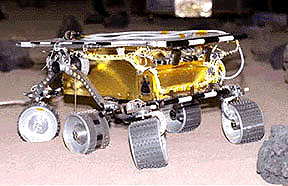
The Mars 2005 mission is still in the planning stages. It is set to launch in the year 2005.
...more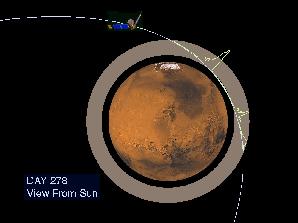
Aerobraking slowed the Mars Global Surveyor down when it reached Mars. Aerobraking also helped MGS to get into the right orbit for mapping the surface of Mars. Aerobraking means that the MGS flew through
...more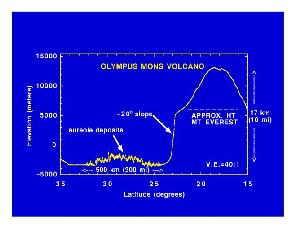
Mars Global Surveyor carries an instrument which measures the heights of things. This instrument is called an altimeter, or "altitude-meter". The graph to the left shows the results returned from Mars
...more


